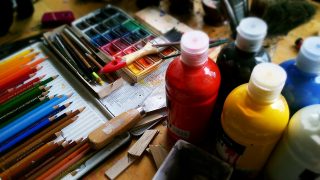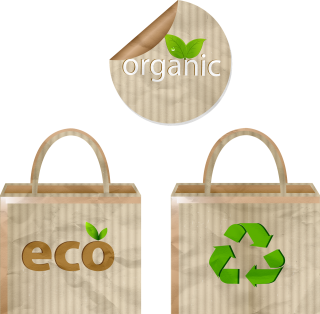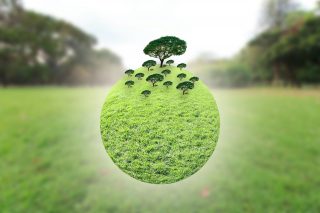In this blog I want to explore what developing a sustainable art-based practice may mean and offer some practical links to help with materials.
For me being sustainable is working out how to tread softly on our planet, such that my footprint does as little harm as possible. I would not say that I have a fully sustainable practice but it is my aim to be as sustainable as possible. And to keep informed so that I can improve my sustainability.
Tough decisions but be kind to yourself
Being sustainable has tough decisions attached to it and mine can be led by financial constraints, practical reality, accessibility and, to be honest, expediency. It can be hard to put the environment first all the time, even though I know how urgent the situation is and yes that does make me feel bad.
I do recycle wherever possible and I try and choose more environmentally friendly products when I have the choice available to me. I also avoid some products as much as possible, for example acrylic paints. I am also much more conscious in my thinking when making choices that have an environmental cost. For example, I drive a diesel car and I live in a rural location. I can’t afford to replace my car and even if I could the infrastructure for electric cars is limited making it impractical for the way I live and work. I could travel by train but again living in a rural location makes this impractical for many journeys. I have made and accepted this decision, for now.
Each of us will have our own choices and decision-making processes around our environmental impact, and we need to be kind to ourselves when those decisions may not be as environmentally friendly as we would want them to be.
Sustainable art-based practice
For me one of the most significant areas of sustainability in my art-based practice is the materials I use and how I dispose of them. Art materials are well known for their detrimental environmental impact. For example, paper production uses vast amounts of water and is very polluting, some paints have heavy metals in them, and acrylic mediums are plastic.
Acrylics
Acrylics are one of the most common paints used by artists and have plastics in them. Pouring the water used to clean brushes and palettes down the sink is not environmentally friendly and careful consideration needs to be given as to how this water is disposed of, as well as the tubes and pots of paints. I am now so concerned with the idea of acrylics that I have significantly reduced the use of acrylic based anything in my art. I never offer it as part of my materials on courses nor for coaching sessions. But that is my personal decision and need not be yours.
 If you love working with acrylics here are three links showing how to dispose of acrylic paint. It is not a quick solution but worth it if you can’t do without these paints.
If you love working with acrylics here are three links showing how to dispose of acrylic paint. It is not a quick solution but worth it if you can’t do without these paints.
https://www.goldenpaints.com/just-paint-article3
https://www.youtube.com/watch?v=xoVGv4ZkO8E
Eco-friendly materials, links and resources
In the list below you will find links to online shops offering eco-friendly art materials and a link to a site that supports artists wanting to become more sustainable.
When looking for replacement or new materials for your practice, always search for an eco-friendly version. Manufacturers are increasingly changing production methods to include, for example recycled plastics for pens, and offering eco-alternatives to their main brands.
- Mackendrew is an online art materials shop that has many green or environmentally thoughtful products including recycled papers, eco-friendly boards, and reclaimed oil paints https://www.mackendrew.org/environmentally-friendly-art-supplies/
- Conscious Craft stocks safe natural materials primarily for children but, hey, these are just as great for art-based coaching. Products include wax blocks, coloured pencils, and earth paints https://consciouscraft.uk/collections/art
- How to be a sustainable artist @ Ethical Unicorn has lots of really sound advice, ideas and resources for becoming a sustainable artist, much of which are relevant for our own art-based practice https://ethicalunicorn.com/2021/06/23/how-to-be-a-sustainable-eco-friendly- artist/#:~:text=Whether%20paper%20or%20canvas%2C%20opt,and%20free%20from%20optical%20brighteners.
- Scrap stores are part of ReusefulUK, a national network of scrap stores in the UK for community groups who need high quality art and craft materials for their members. The range of materials changes from day to day and could include card, paper, textiles, paint, corks, wool, cardboard tubes, netting, gauze and a thousand other things! You can also donate to these stores https://www.reusefuluk.org/scrapstores-directory . You may have similar facilities in your country or state.
Donating unwanted materials
If, like me, you are a bit of magpie when it comes to art materials you may find you have quite a bit sitting unused and even materials you will never use. If you have spare materials, why not donate them to local schools or charities. I have recently passed on a lot of materials to a prison who was asking for art materials for inmates during the recent lockdowns.
Other things to consider
 Below are some other things we can consider around our making our practice sustainable. It is not exhaustive, and you will probably be doing many of these already. If there are other things you are doing that you would like to share why not leave a comment. It would be great to share ideas and support each other in building sustainable practices.
Below are some other things we can consider around our making our practice sustainable. It is not exhaustive, and you will probably be doing many of these already. If there are other things you are doing that you would like to share why not leave a comment. It would be great to share ideas and support each other in building sustainable practices.
- Travel – do we need to? Can we work online just as effectively? This is not always the case and each client will be different
- Office equipment – when you need to replace your printers, PCs, laptops, phones etc. all of these can be either recycled or moved on to charities that refurbish them for new users
- Ink cartridges – when they runout you can recycle them. Most manufacturers offer a recycling service and it is often a freepost service
- Recycling your used paper and cardboard. In the UK all councils provide collection services for these and other household materials including plastics
- Energy saving – is your PC, printer or laptop left on standby/sleep rather than being fully switched off? Switching off appliances and gadgets saves a lot of energy
- Online ordering – are you ordering things that arrive in ones or twos? Could you do a bigger online order which reduces the courier time on the road to your door
There are many areas that we could think about and I would love to hear about the things you are doing.
Related blogs
Art and Coaching for Climate Change



One comment on “Developing a sustainable art-based coaching practice”